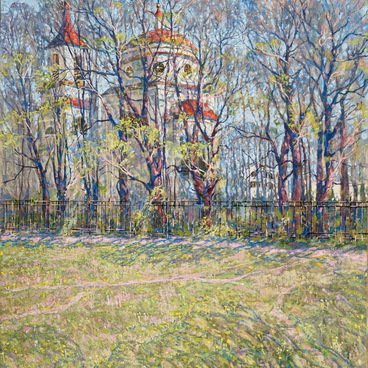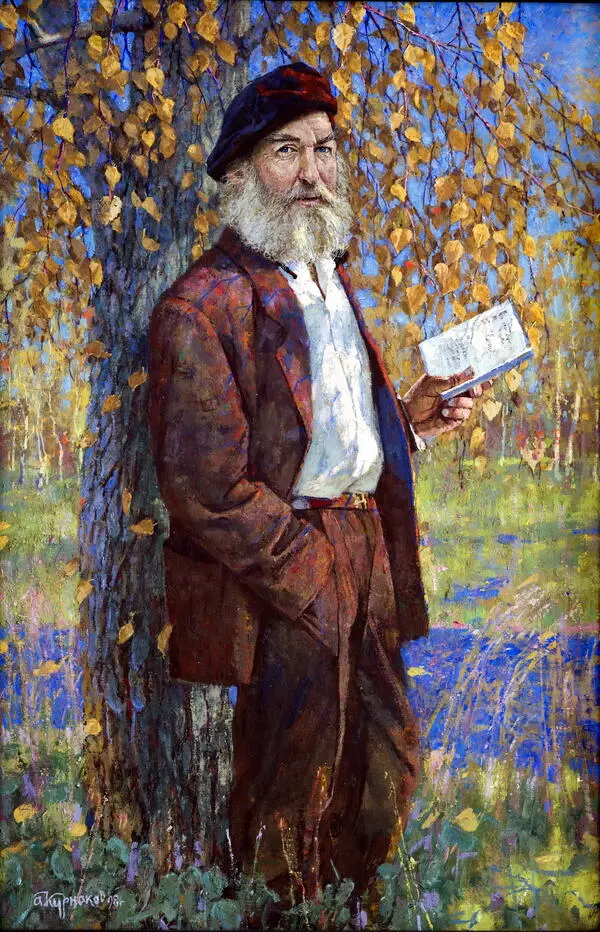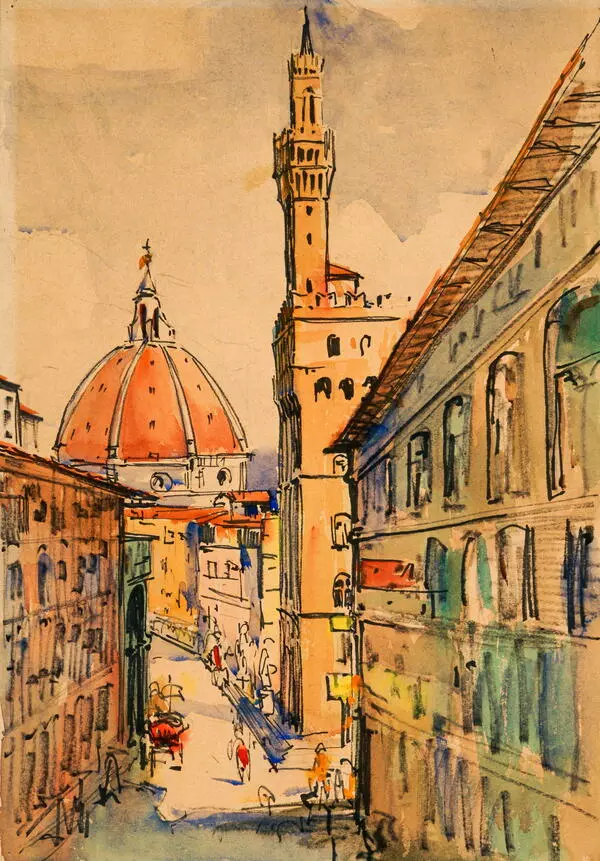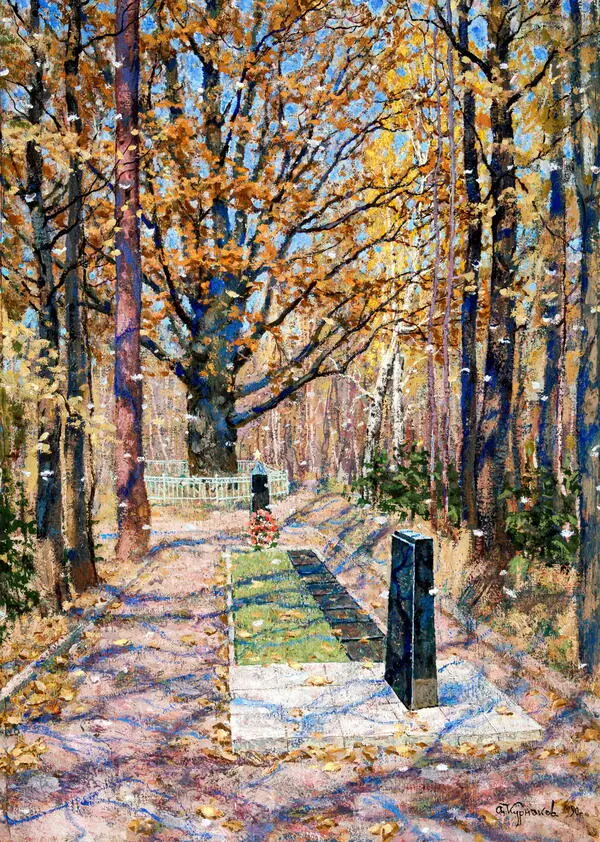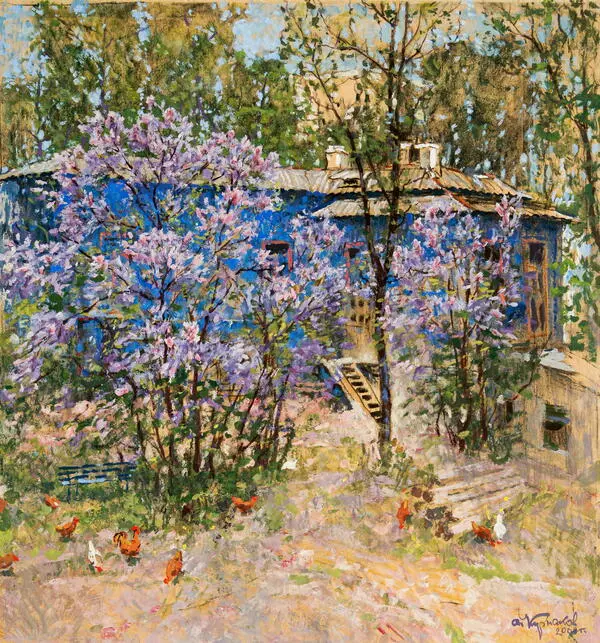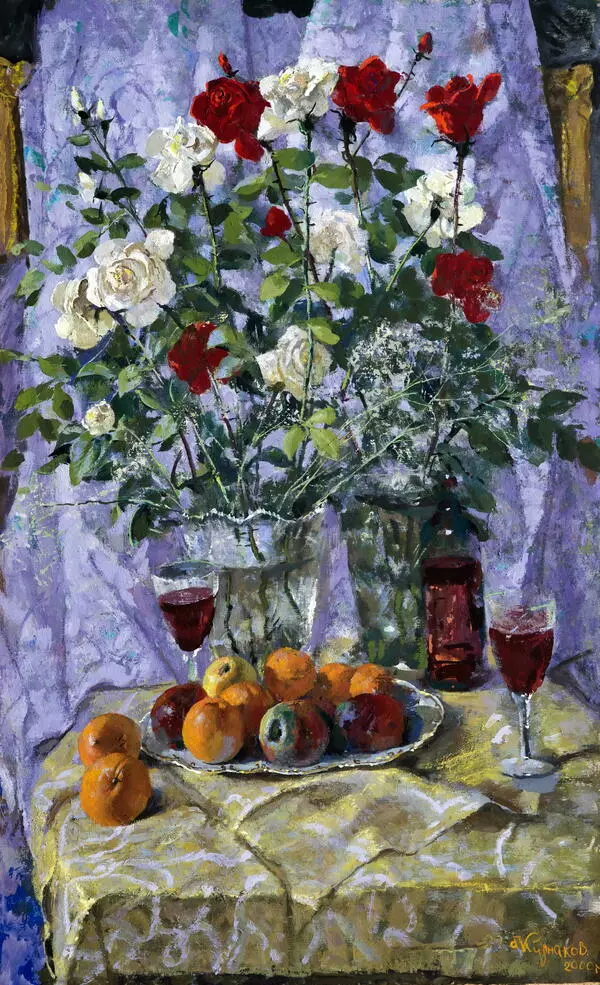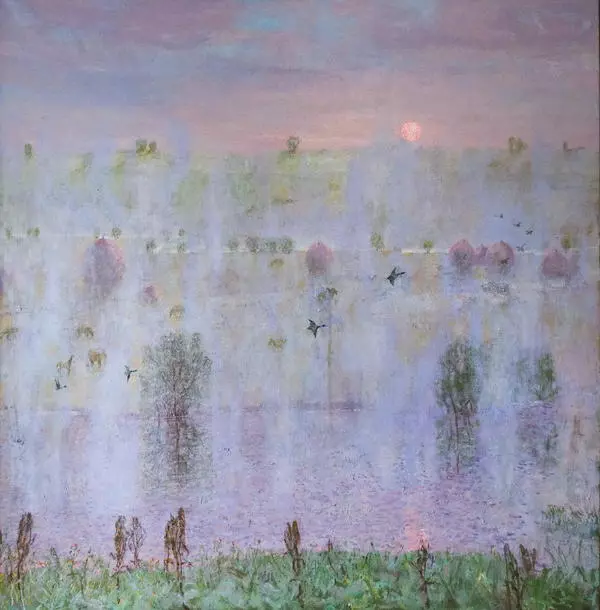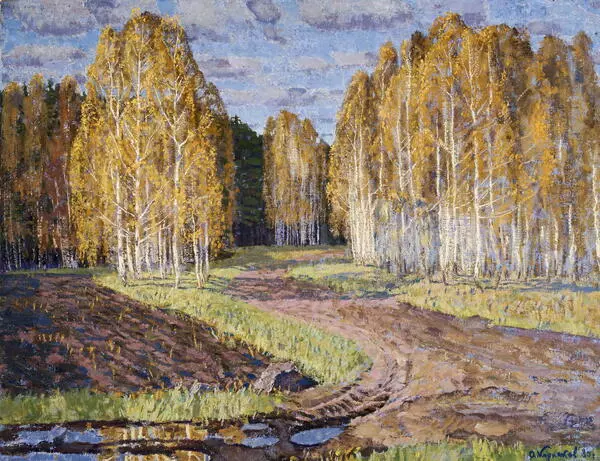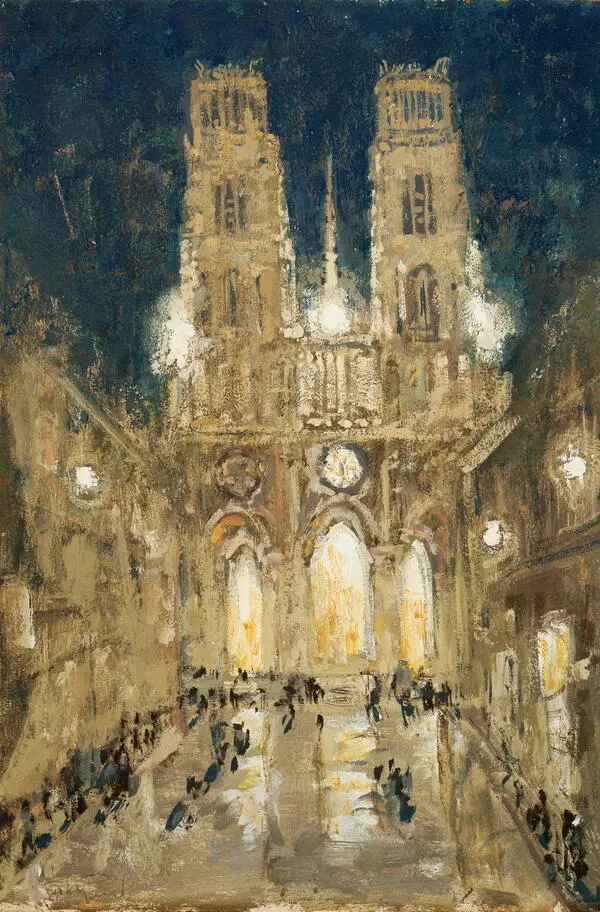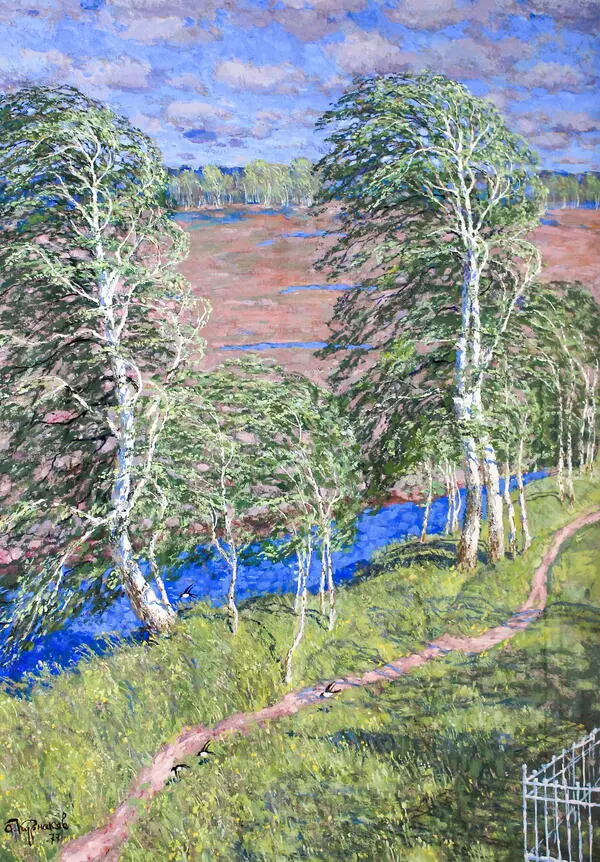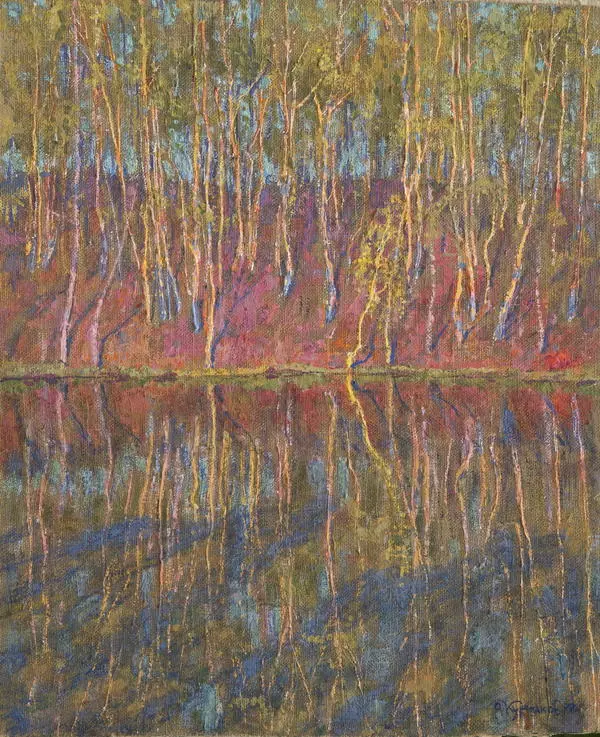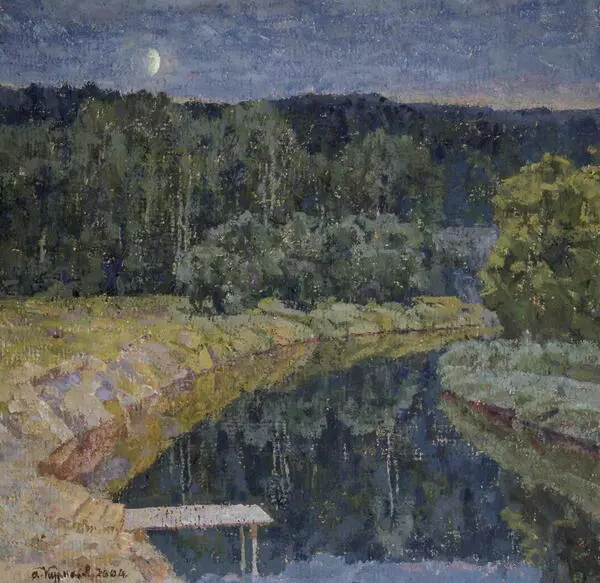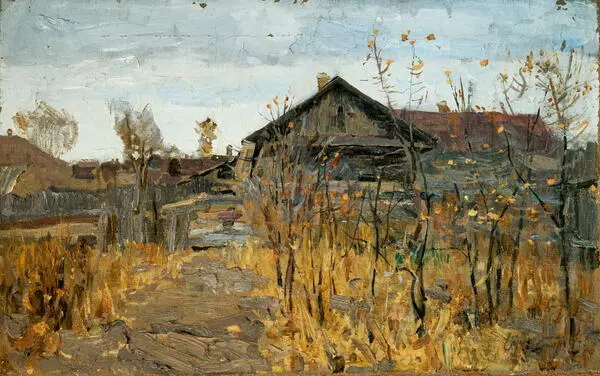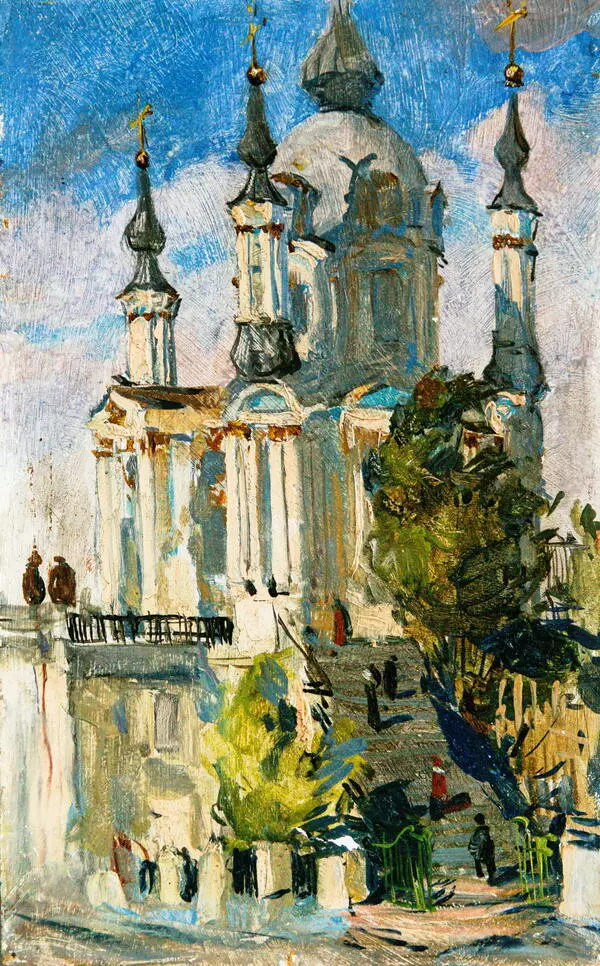The artist Andrey Kurnakov painted numerous views of Spasskoye-Lutovinovo — a village in Oryol Oblast. Any of Turgenev’s admirers would know the writer’s ancestral estate in the north of Mtsensk District. The countryside is located in the most picturesque central zone of Russia with moderately frosty winters and warm summers. Kurnakov was fond of his favorite Spasskoye and painted a whole series of views there.
This time the artist depicted a yard with sheds. The title is self-explanatory — “March in Spasskoye. The Stable and Carriage House”. The painting features two small unassuming stone houses, which were whitewashed or painted with white paint. Despite the fires that broke out in the manor house, the 19th-century stable and carriage house have survived to this day. They serve as the focal point of the picture. But the true subject of the painting is March.
The artist focuses his entire attention on the state of nature. It is a bright sunny day in early spring, when nature is expected to awaken from its winter sleep. There is still snow on the ground, but the warm, green, young season is on the way. Everything is suddenly full of light, and the world awakens.
Kurnakov traditionally uses a wide foreground, which he paints meticulously. The brush stroke is careful, confident, and powerful. There are footprints in the snow. Yellow sand has been strewn on the path to the carriage house. There are heaps of sand both near the stable and in the foreground. The snow has already thawed under the spring sun, which is still weak and not hot. The once snow-white cover turned into a dirty crust. The artist finds a great variety of shades to depict this melting snow: pink comes from the rays of the hidden sun, light blue — from the bright sky, muddy yellow — from the sand, and purplish grey is added by the shadows.
These shadows inevitably attract the artist’s attention. Kurnakov often creates compositions with trees beyond the pictorial space. He implies their presence but does not depict them. The light blue openwork pattern and the few thawed patches create a unique motif. The shadows cast by branches outside the picture frame are the first to attract attention, and they lead the eye into the open space of the foreground.
In the background is a high, bright blue sky with a few pinkish, sun-lit cumulus clouds. In the distance are the trees that still keep their ocher autumn foliage. The red wood chips on the roofs of the stable and the carriage house match the color of the young birch trees on the left.
This time the artist depicted a yard with sheds. The title is self-explanatory — “March in Spasskoye. The Stable and Carriage House”. The painting features two small unassuming stone houses, which were whitewashed or painted with white paint. Despite the fires that broke out in the manor house, the 19th-century stable and carriage house have survived to this day. They serve as the focal point of the picture. But the true subject of the painting is March.
The artist focuses his entire attention on the state of nature. It is a bright sunny day in early spring, when nature is expected to awaken from its winter sleep. There is still snow on the ground, but the warm, green, young season is on the way. Everything is suddenly full of light, and the world awakens.
Kurnakov traditionally uses a wide foreground, which he paints meticulously. The brush stroke is careful, confident, and powerful. There are footprints in the snow. Yellow sand has been strewn on the path to the carriage house. There are heaps of sand both near the stable and in the foreground. The snow has already thawed under the spring sun, which is still weak and not hot. The once snow-white cover turned into a dirty crust. The artist finds a great variety of shades to depict this melting snow: pink comes from the rays of the hidden sun, light blue — from the bright sky, muddy yellow — from the sand, and purplish grey is added by the shadows.
These shadows inevitably attract the artist’s attention. Kurnakov often creates compositions with trees beyond the pictorial space. He implies their presence but does not depict them. The light blue openwork pattern and the few thawed patches create a unique motif. The shadows cast by branches outside the picture frame are the first to attract attention, and they lead the eye into the open space of the foreground.
In the background is a high, bright blue sky with a few pinkish, sun-lit cumulus clouds. In the distance are the trees that still keep their ocher autumn foliage. The red wood chips on the roofs of the stable and the carriage house match the color of the young birch trees on the left.

